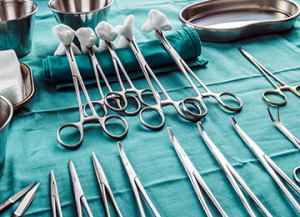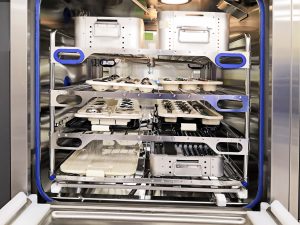Reusable medical device manufacturers should provide users with a method or mechanism to determine when a device has exceeded its intended use life, or they should specify a number of times it can be reused. Guidance documents stipulate that manufacturers should define in their IFUs when devices are no longer usable. However, they do not offer or provide instructions on how this is to be verified. These specifications should be confirmed by validation testing. Such testing is often referred to as end-of-life (EOL) testing or sometimes functionality testing.

There are limited guidance and requirements surrounding EOL testing, which leads to confusion and to tests often being performed that are not necessary. Historically it has been common industry practice to follow the specific cleaning instructions within the manufacturer’s IFU. However, there are no requirements for performing these cycles per the IFU, and this approach can cause the testing to be both time consuming and expensive for the manufacturer.
Due to this limited information on EOL tests, manufacturers are struggling to identify the correct methodology to use for validating their devices. The greatest challenge is determining when EOL testing is necessary for their device and how to establish a method that satisfies the intent of the study. One approach that has helped manufacturers with this decision is to test the processing cycles in small increments while monitoring the end points during these increments. This provides information not only on the functionality but also on the potential risks associated with the processing chemicals or soil accumulation.
In healthcare facilities the automated cleaning cycles are often run on a standard cycle with parameters that may vary from the manufacturer’s IFU, and multiple devices may be batched together, using detergents that are available at the time. This is also the case with washer-disinfectors and sterilizers. The brands and models of washer-disinfectors and sterilizers that are used do vary among healthcare facilities.

Because of the factors outlined above and the minimal guidance and requirements surrounding this testing, Nelson Labs has developed a new approach to EOL testing, using a standard automated cycle for washer-disinfectors and regulatory approved cycles for sterilization. This standard cycle is based off common washer parameters offered in IFUs to support both the United States Food and Drug Administration (FDA) and the Europe Union (EU). There is a standard cycle that caters to the US market and another that caters to the EU market. This more realistic approach will not only mimic what is happening in healthcare facilities but will also simplify the process while saving time and resources for the manufacturer.
EOL testing is a key factor in end-user and patient safety. This new approach utilizing standard cycles allows the laboratory and manufacturer to focus on the purpose of the testing and the data points that need to be achieved to determine the device’s end-of-use life. This simplification brings together the manufacturer’s needs, regulatory expectations, and the real-world processing of reusable medical devices while also creating a timely and budget-friendly test option.


